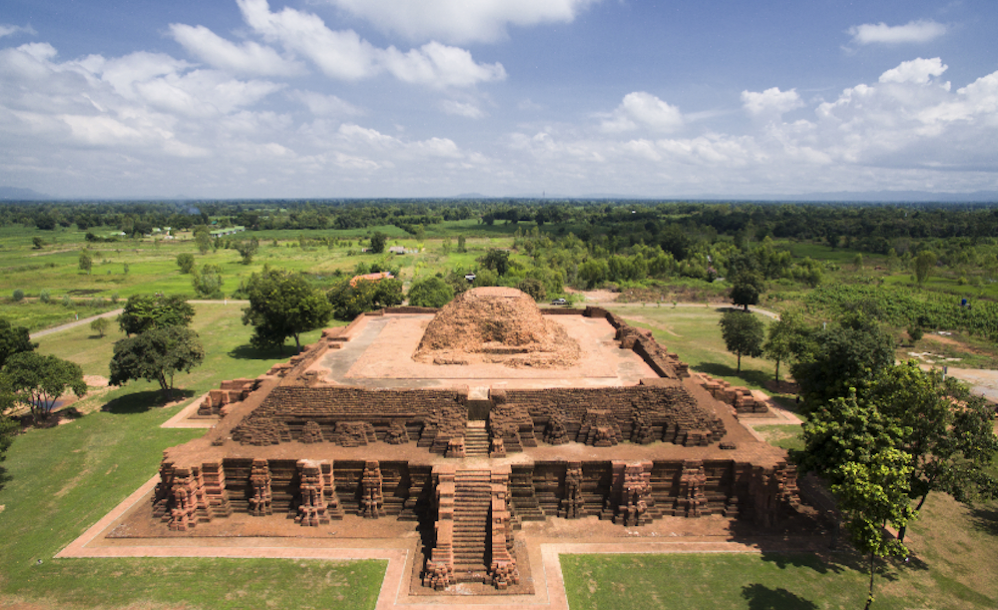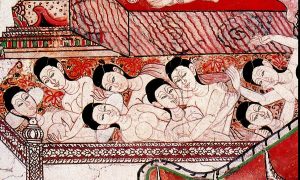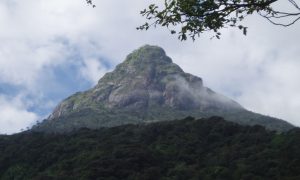“This is a whole ancient city that is only now emerging and being understood by scientists and heritage experts. If this landscape is destroyed, this city and the stories of the people who lived there will be lost to us forever.”
300 kilometres northeast of Bangkok lies Thailand’s hidden heritage wonder, Phetchabun province. It is home to some of the country’s most impressive environmental reserves, with three national forest parks, two Sukhothai-era 12th century cities—Muang Leng and Muang Lom (Sak)—and heritage sites related to the founding king of Sukhothai, Khun Pha Muang. Yet even these heritage sites seem dull when compared to Phetchabun’s real gem: Thailand’s oldest and largest ancient city, Si Thep. The size, scale and historical significance of the city easily rivals many of the more popular great UNESCO heritage sites in Southeast Asia.
Si Thep Historical Park was on track to become one of Thailand’s candidates for UNESCO heritage status. However, news broke on 25 February 2019 that shocked and angered the local community in Si Thep, as well as the academic community and those working within the heritage industry. ECO Orient Resources (Thailand) Ltd and ECO Orient Energy (Thailand) Ltd had organised a public hearing about plans to construct a drilling rig just 100 metres away from one of the historical park’s largest monuments, Khao Khlang Nok stupa. Khao Khlang Nok is Thailand’s largest stupa, a 64 by 64-metre stupa that stands 20 metres tall and dating back to at least the ninth century CE.
Phetchabun is one of Thailand’s many overland oil fields. There are already approximately 95 onshore oil drilling facilities in Si Thep and Wichien Buri districts, with intermittent news coming out about community protest and environmental degradation resulting from oil drilling.

Oil Drilling Protest in Lomsak, Phetchabun Province (Credit: https://www.thairath.co.th/content/423827)
The threat of oil concessions in Si Thep District
The deputy mayor of Phetchabun, Krit Khongmuang, held the first public hearing on environmental impact assessment after ECO Orient Resources (Thailand) Ltd and ECO Orient Energy (Thailand) Ltd, operating under the L44/43 old production concession, submitted a proposal to build an oil drilling facility near Si Thep Historical Park. ECO company group is the second largest onshore oil producer in Thailand.
ECO Orient Resources (Thailand) Ltd owns 60% of working interests in the L44/43 concession, an area covering 7,604 hectares (about the same as the size of Aberedeen or 7,604 rugby fields). The other 40% belongs to Carnavon. Production licenses expire in July 2032; a ten years extension is available under the Thailand Petroleum Act. As of 2017, L44/43 produces oil at an average of 3,735 barrel per day from 26 producing wells. Not only is the new proposed drilling site (STN-2) situated near Khao Khlang Nok, it also overlaps on ancient settlement grounds.
To construct the oil drilling facilities, the company will need to level the land. After such adjustment, the rig’s ground would be a mere 100 metres away from one of Thailand’s most important ancient buildings. To make matters worse, there are ancient water tanks, unexcavated infrastructure, and archaeological materials distributed across the area (see green markers in the map below).
For archaeologists, this type of material distribution demonstrates there was once habitation activities in the area. Levelling the ground will further destroy these sites, which have already been disturbed by agricultural activities. This is a whole ancient city that is only now emerging and being understood by scientists and heritage experts. If this landscape is destroyed, this city and the stories of the people who lived there will be lost to us forever.
Excavation at Khao Khlang Nok has revealed that the site contains land levelled with bricks; vibrations from oil drilling can severe damage these foundations, which can result in the collapse of these important structures. Furthermore, there are limited surveys on surrounding ancient settlement activities both inside Si Thep Historical Park and the area surrounding Khao Khlang Nok. These sites could also be destroyed, even before being studied or surveyed.

Map of Proposed Drilling Site (STN-2) and Khao Khlang Nok Stupa with green points showing excavated and non-excavated ancient structures mounds
The local communities and the Phetchabun Chamber of Commerce strongly opposes oil drilling. Locals fear that building an oil drill will affect Si Thep Historical Park’s prospect for UNESCO heritage nomination. The company will have until April to formulate an Environmental Impact Assessment (EIA) plan, whose results will then be announced in another public hearing. So far, the company has stated that the drilling rigs would cause minimal impact to the scenery of the heritage park. Despite plans to hide the oil rig with trees, as suggested by Vision E Consultants Co,. Ltd (the consultancy responsible for conducting the EIA) archaeologists and local communities have all agreed that the facility would also mean constructing roads for transporting petrol, additional noise pollution, water pollution, and heritage destruction for both nearby villages and heritage sites.

Survey of archaeological sites around Khao Khlang Nok, courtesy of the Fine Arts Department
Legally, the Fine Arts Department does not have the authority to prevent the rig construction. The EIA report will be announced in public in April, then submitted to the Office of Natural Resources and Environmental Policy and Planning (ONEP) for approval. If the committee at ONEP approves the plan, then the construction will go ahead. This would be disastrous for both heritage and environmental conservation.
Si Thep Historical Park and its Landscape

Map depicting Si Thep City and surrounding (known) sites and water tanks (Image Credit: Academic Unit, Si Thep Historical Park, Fine Arts Department)
Si Thep Historical Park and its surrounding site deserves proper conservation and should be preserved for the future rather than traded for oil profits, which will benefit neither locals nor sustainable development in Phetchabun. Si Thep is potentially the largest ancient urban site in Thailand, its lifespan stretching back to the first to twelfth centuries CE. Si Thep Historical Park alone covers an area of 622.2 hectares. My study using old aerial photographs of the site revealed a complex system of hydraulic features and a third moat system that extends out beyond the area in Khao Khlang Nok, making the ‘city’ area approximately 1,544 hectares. A rough population estimate, base on water tanks, wells, site counts within the city, and material dispersal places the city’s population estimates at around 80,000 at conservative levels and 120,000 at a higher bound. Si Thep’s size and scale is then comparable with some of the more famous UNESCO Heritage Cities in Southeast Asia like Beikthano and Bagan in Myanmar.
Like many Dvaravati and related urban sites such as U-Thorng and Si Mahosot (Avadhyapura), the habitation area and material culture are not only contained within the moats and walls. Si Thep’s monuments and material culture densely spill out of its main urban area. Si Thep is connected to Khao Thom Amornrat and Tham Phra caves via a complex hydraulic system. Both caves contain rock cut sculptures depicting scenes related to Buddhism. Thom Amornrat mountain is particularly highlighted in its relationship to Si Thep city. Khao Khlang Nok stupa directly aligns with the mountain and obstructing the landscape with a high rise or drilling facility would impact the culturally- and historically-sacred landscape alignment.

Image Reconstruction of Khao Khlang Nok stupa and its satellite stupa, Fine Arts Department
It will take public outcry by both local and international agents to prevent this disaster from going forward. Without legal and public attention, it is likely that the EIA report will allow oil drilling to go ahead. Please show your support and share the news, which is the best way to support the local community in their fight to alert ECO Group investors that their investment is going towards heritage destruction.
 Facebook
Facebook  Twitter
Twitter  Soundcloud
Soundcloud  Youtube
Youtube  Rss
Rss 


